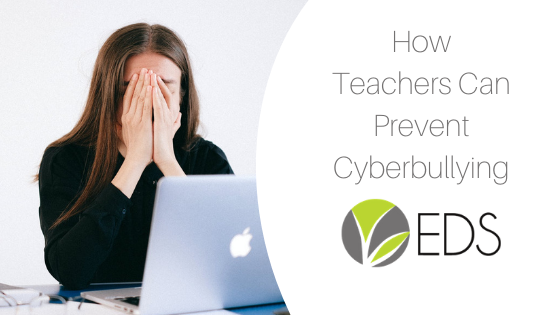In today’s world of social media and frequent Internet usage, cyberbullying is more than just a myth. And of course, with the enforcement of remote learning, the risk of students being cyberbullied is even more prevalent. It may feel difficult to monitor and educate your students about digital citizenship, so here are some tips we have on how you can prevent cyberbullying in your school district.
Cyberbullying Statistics
Unfortunately, cyberbullying is often taken less seriously compared to physical harassment or teasing. However, cyberbullying is a real issue that is plaguing our children and teens. A study from Pew Research Center conducted in 2018 found that 59% of teens in the United States have been cyberbullied. Their study also found that a majority of teens are online almost constantly, and those teens are the most likely to get cyberbullied. It’s also important to note that teens from lower-income families, girls, and LGBT teens are considered to be more likely to experience cyberbullying.
Identifying What Cyberbullying Looks Like
What does cyberbullying look like nowadays? Here are some ways that cyberbullying occurs:
- Harassment and/or cyberstalking: “lurking” on someone’s profile and constantly harassing them
- Account hacking/creating fake profiles to spread misinformation
- Doxing: spreading personal information without consent)
- Swatting: calling emergency responders such as the police to someone’s house)
Signs that these types of bullying could be occurring:
- Seeming anxious when using their phone or computer
- Sudden change in friend groups with little explanation
- Hiding tabs on computer/phone
- A general shift in emotions (seeming depressed, withdrawn, anxious, etc)
It’s important to monitor your students as closely as possible to notice signs like this. If you feel something is off about a student, consider reaching out to them or their parents/guardians to see what’s going on.
So now that we know a little more about cyberbullying, what can teachers do to prevent it?
Educating on Digital Citizenship
When students learn about digital citizenship, they will learn to appropriately and responsibly use the Internet and other technology. Educating your students on what impact their actions can have online is extremely important.
While teaching digital citizenship is helpful for cyberbullying prevention, it has other uses too. Students can understand hacking, piracy, viruses, information literacy, and also how to take care of their physical and emotional health in a digital world. You can learn more about digital citizenship here.
Encouraging Victims to Reach Out
Many students don’t report cyberbullying to parents or teachers out of fear of losing access to technology, or the possibility of not being taken seriously. There are programs out there (including our own program HIBster) that allows students to report any incidents anonymously. If students know there is an anonymous way to report any bullying, they may feel more encouraged to report.
Establishing Anti-Cyberbullying Policies
There is no exact method to fully stop all forms of bullying, so it’s important to establish a proper policy in the instance that cyberbullying does occur. To do this, you need to have a clear definition of bullying, a clear and defined way the school should respond to any reports, and proper and appropriate response to said claims.
When bullying occurs, it is important to get to the source of the problem, rather than deal with the problem and move on. Many of the programs we have created work together to manage incidents and also educate and remediate students. For example, HIBster allows you to manage reports, and programs like HIBstervention, aSAP, Onspire can help you deal with the emotional aftermath of bullying.
Final Thoughts
Overall, spreading a positive environment is one way to deal with cyberbullying. Remote learning due to the pandemic can be extremely isolating for many students; try to encourage your students to positively interact with each other online. Weaving digital citizenship into regular lessons and chapters can also be an effective way to teach the importance and impact of kindness online.
Any of the programs we have mentioned in this article are also ways to manage cyberbullying incidents this school year. Contact us today to learn more.

